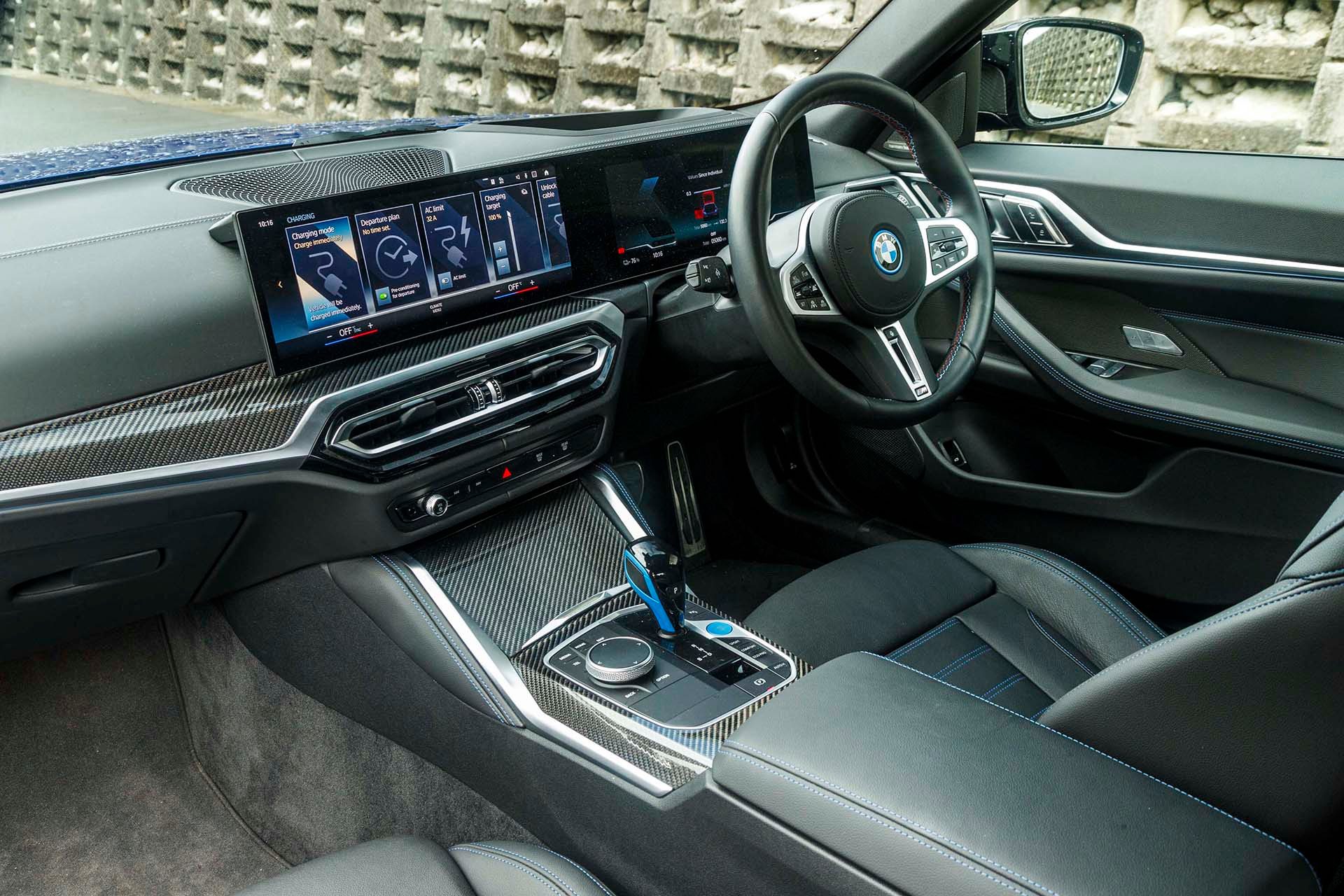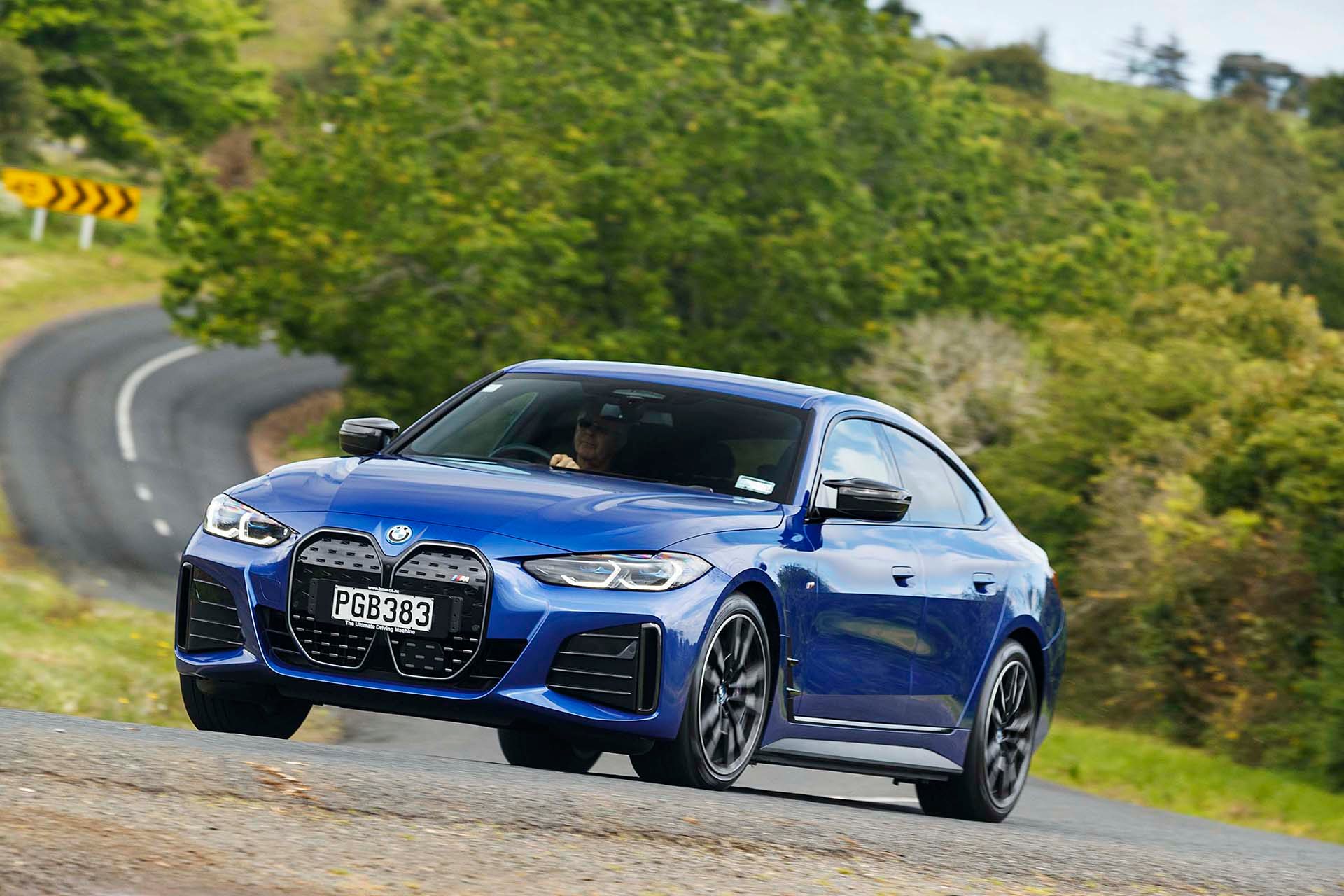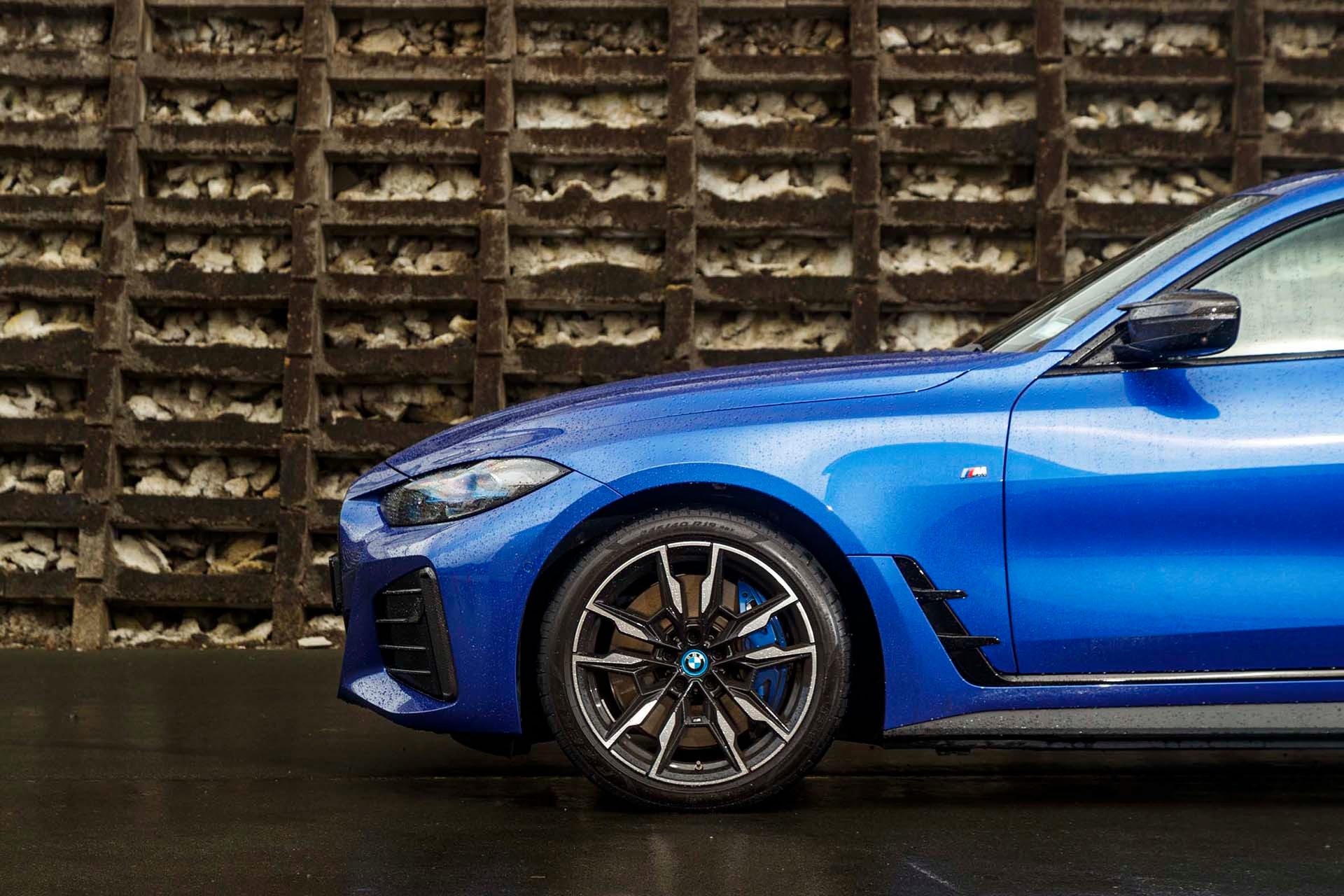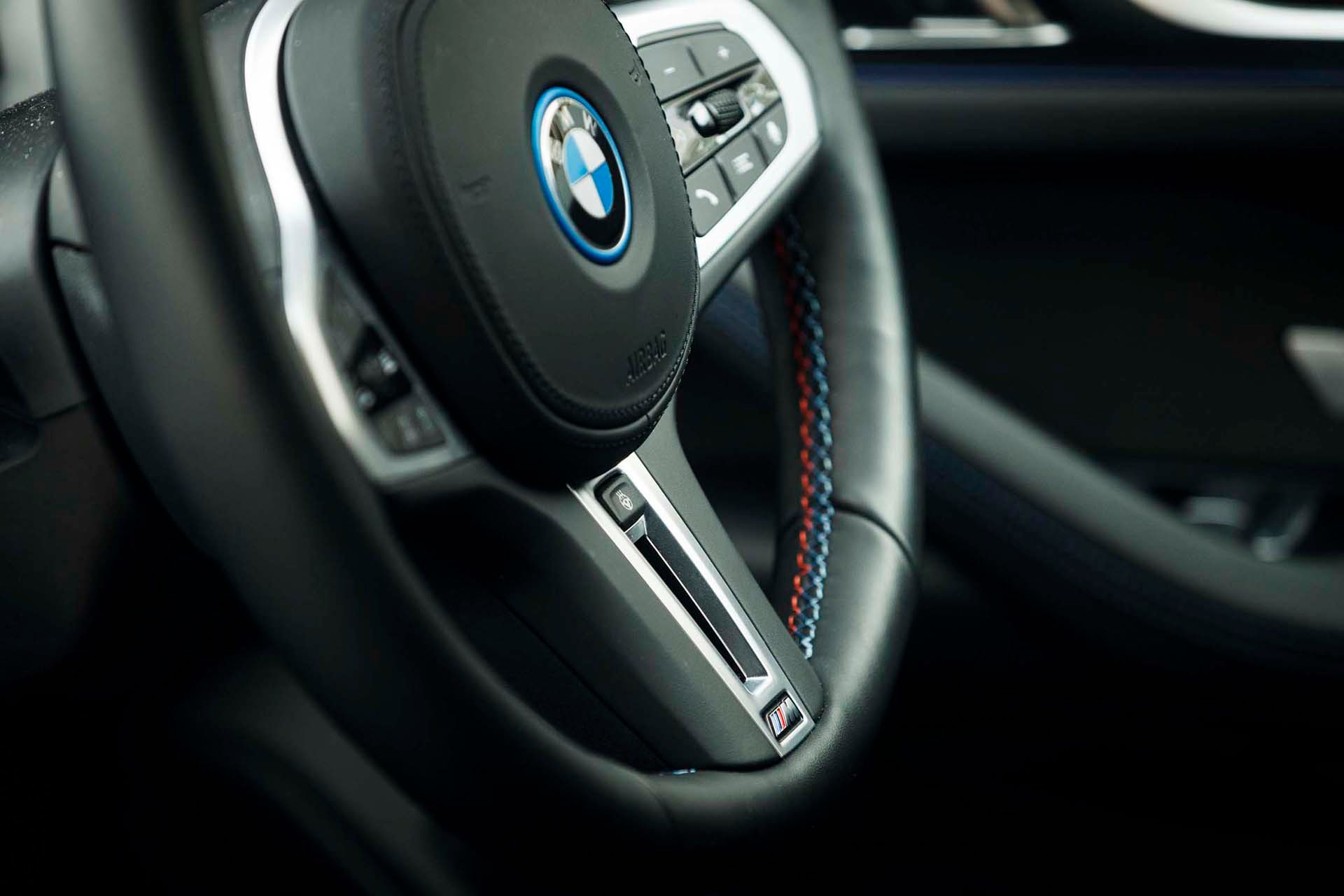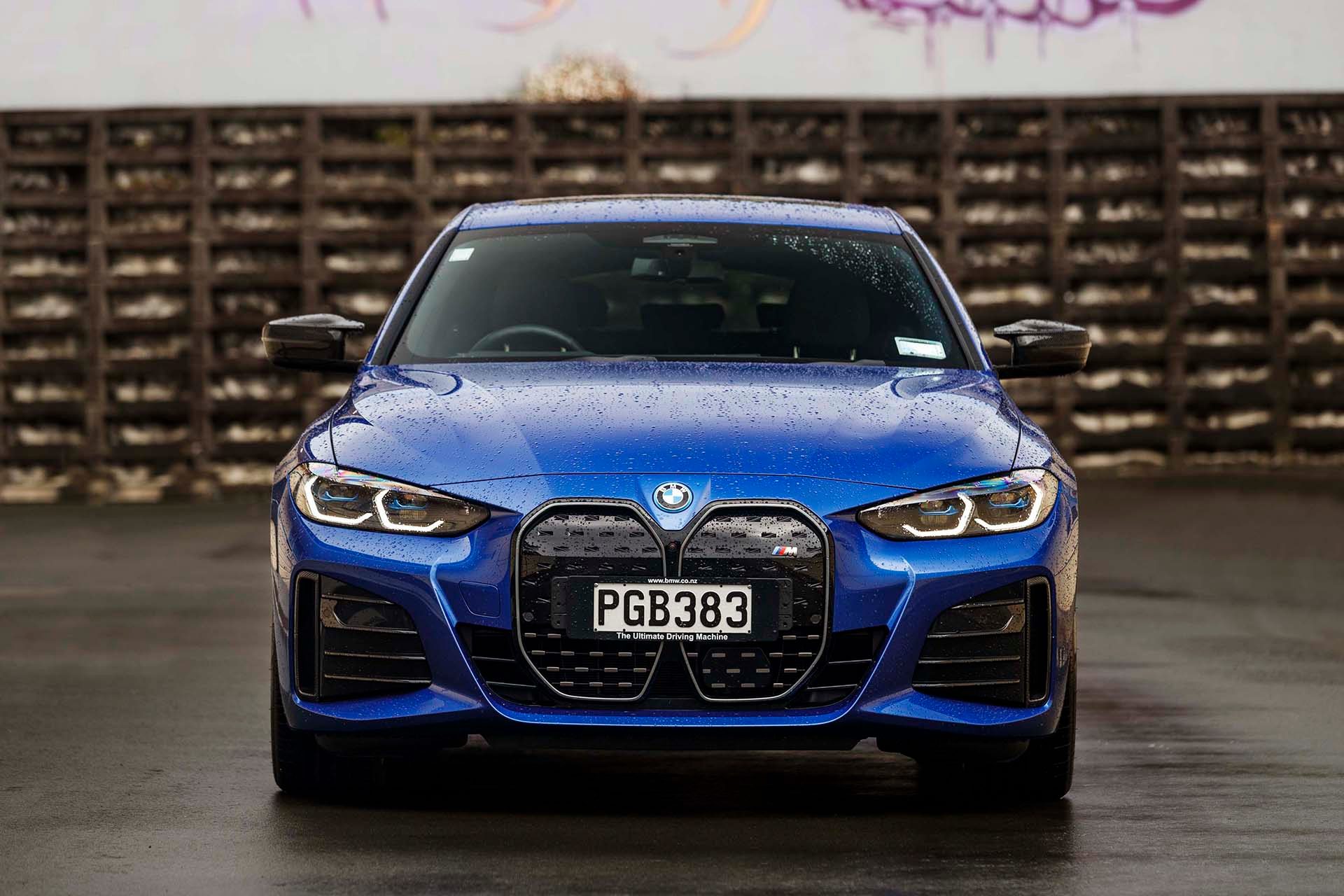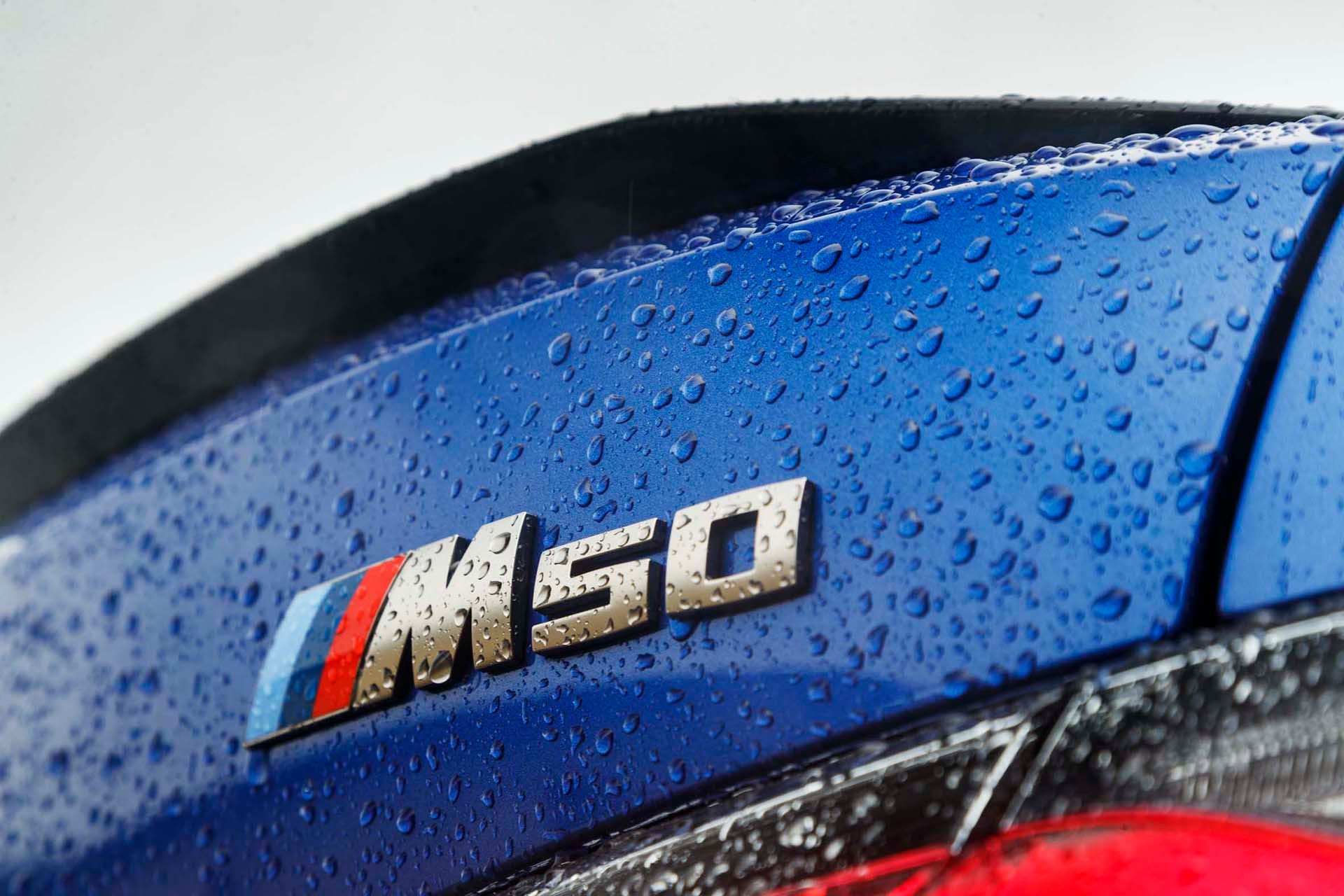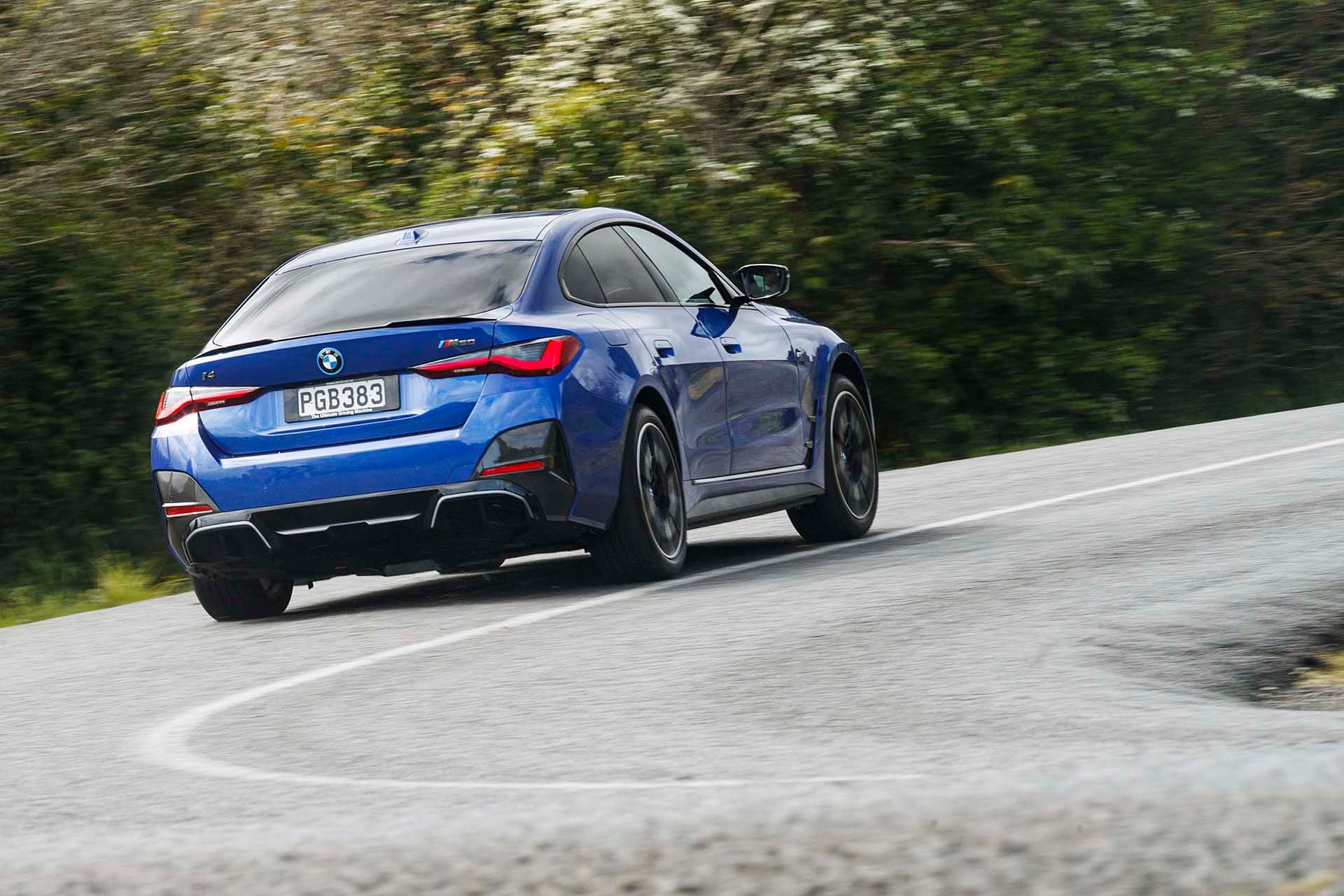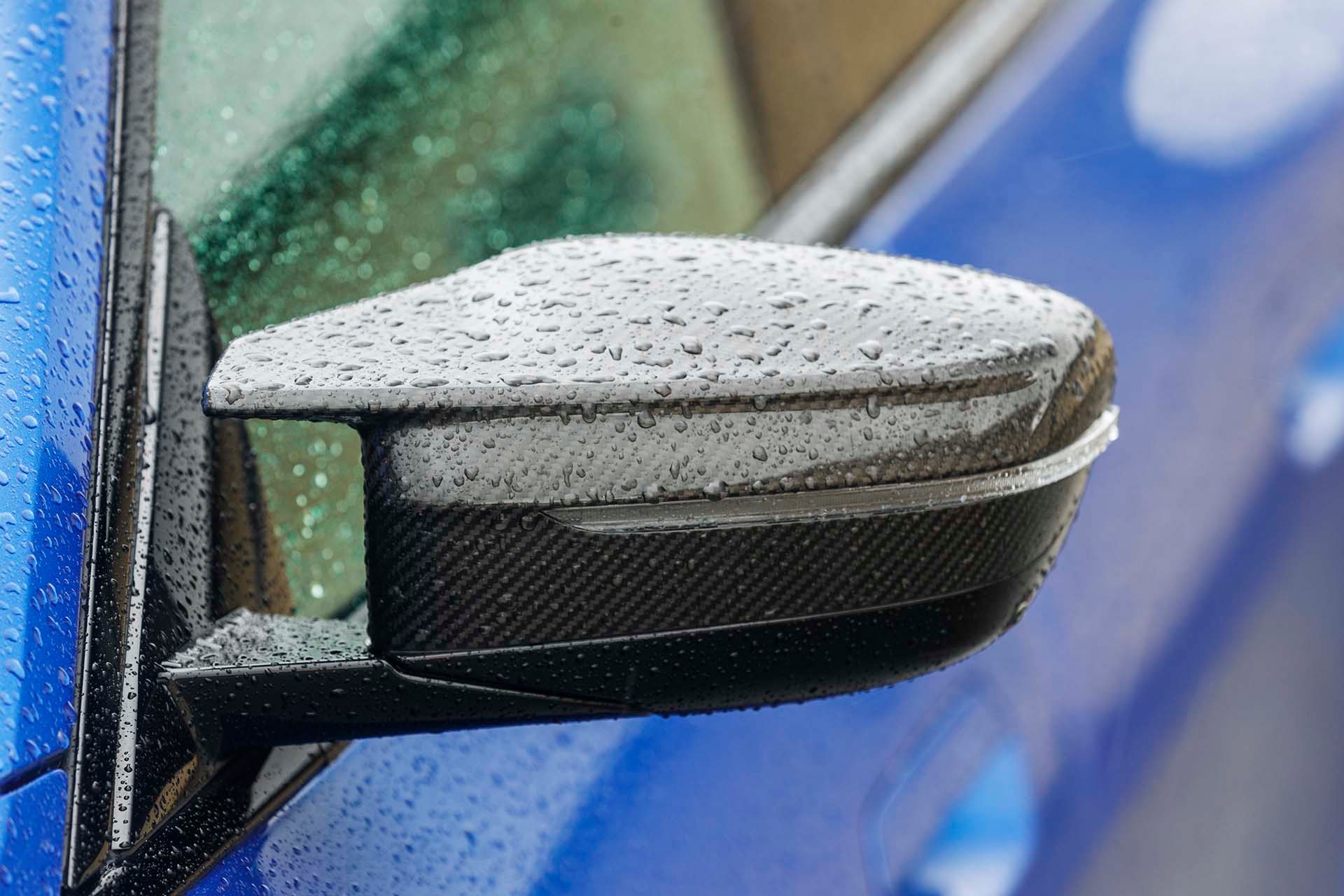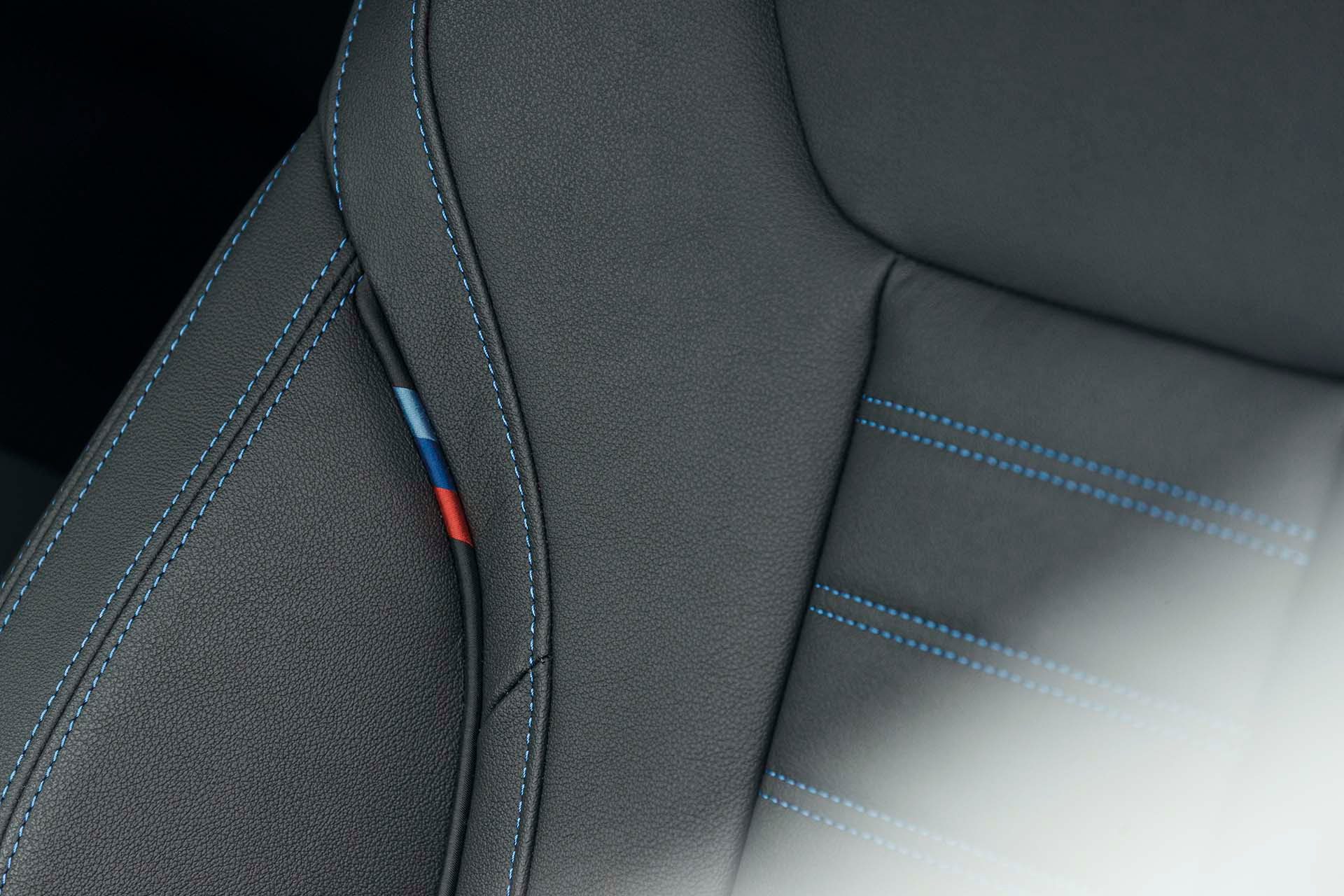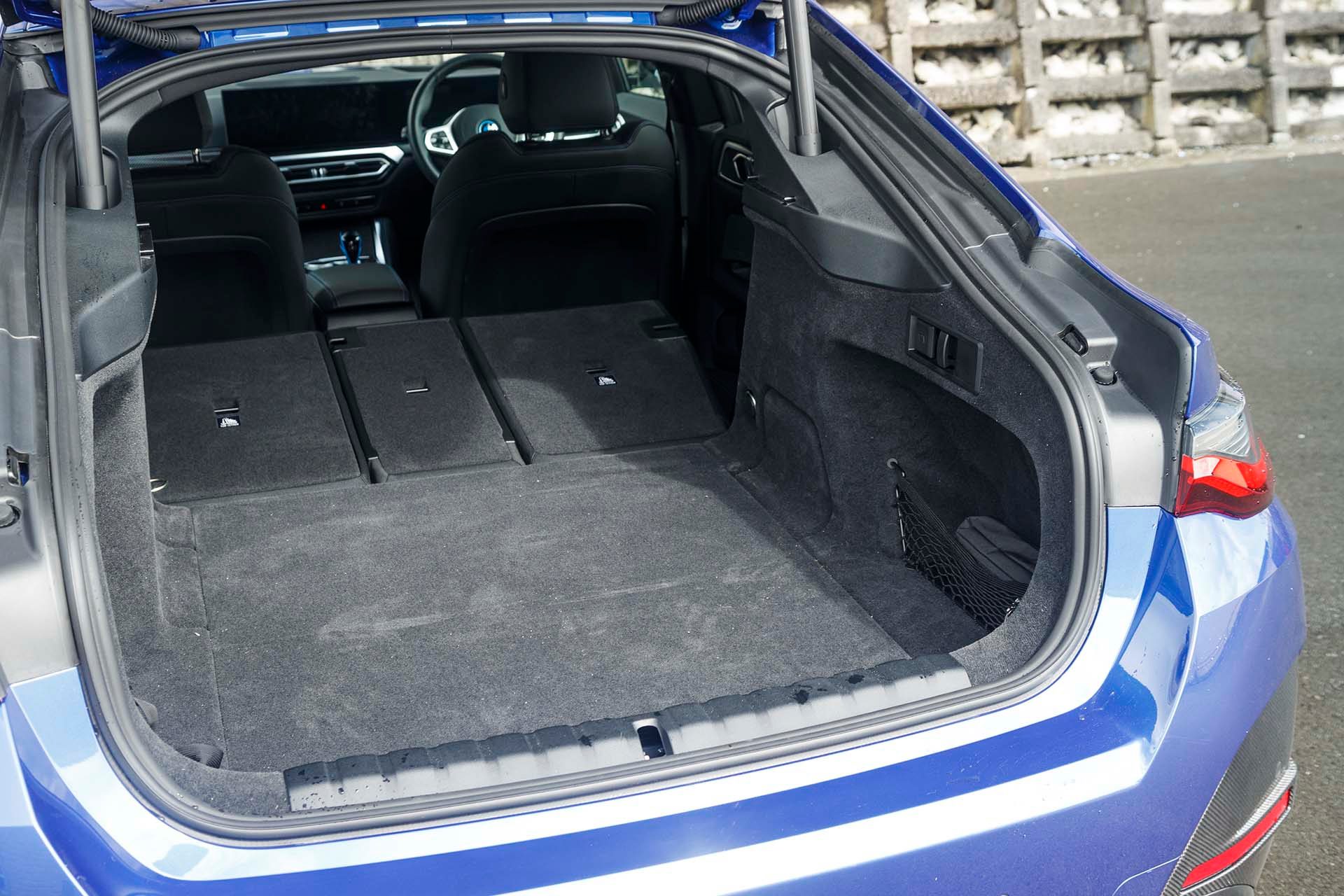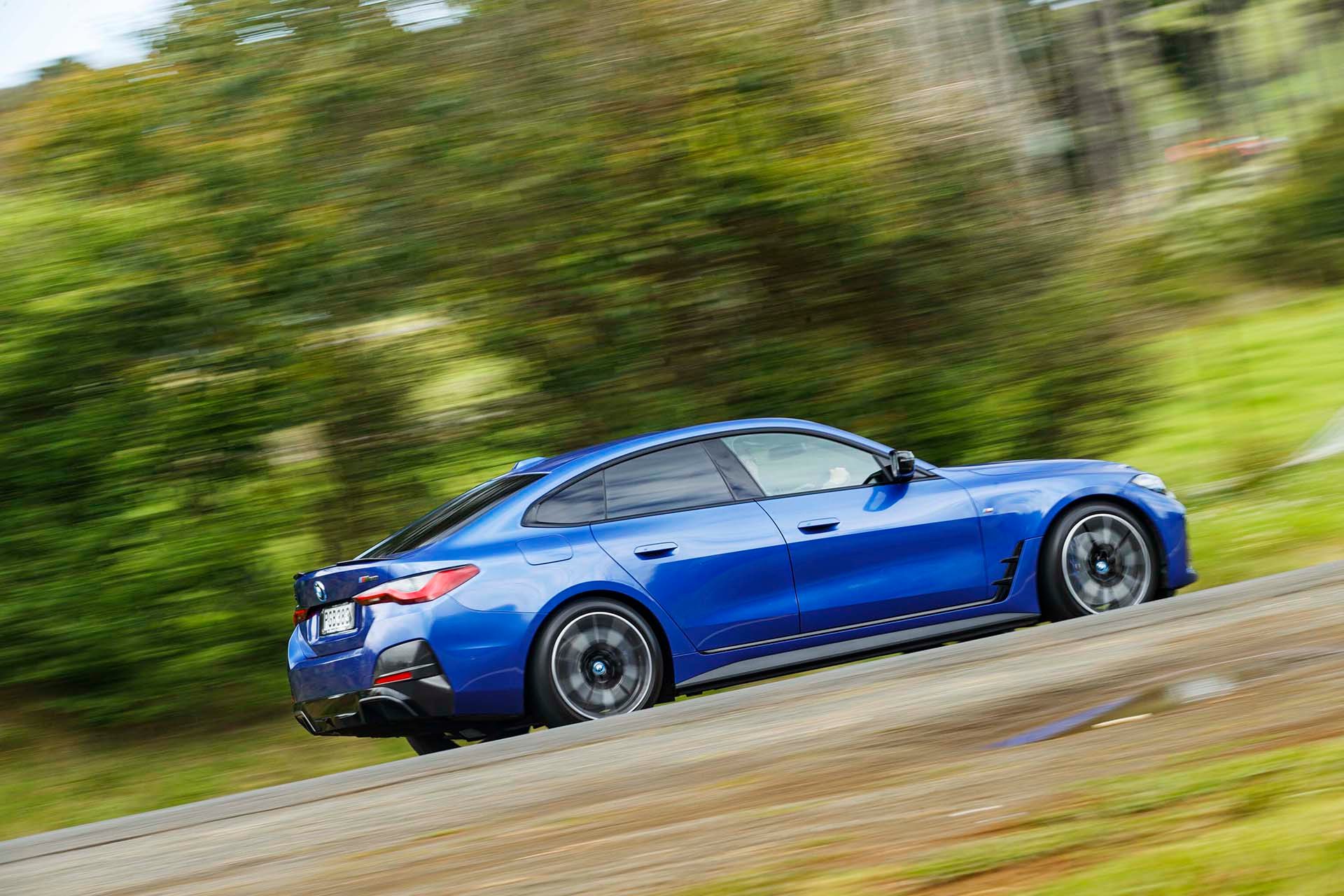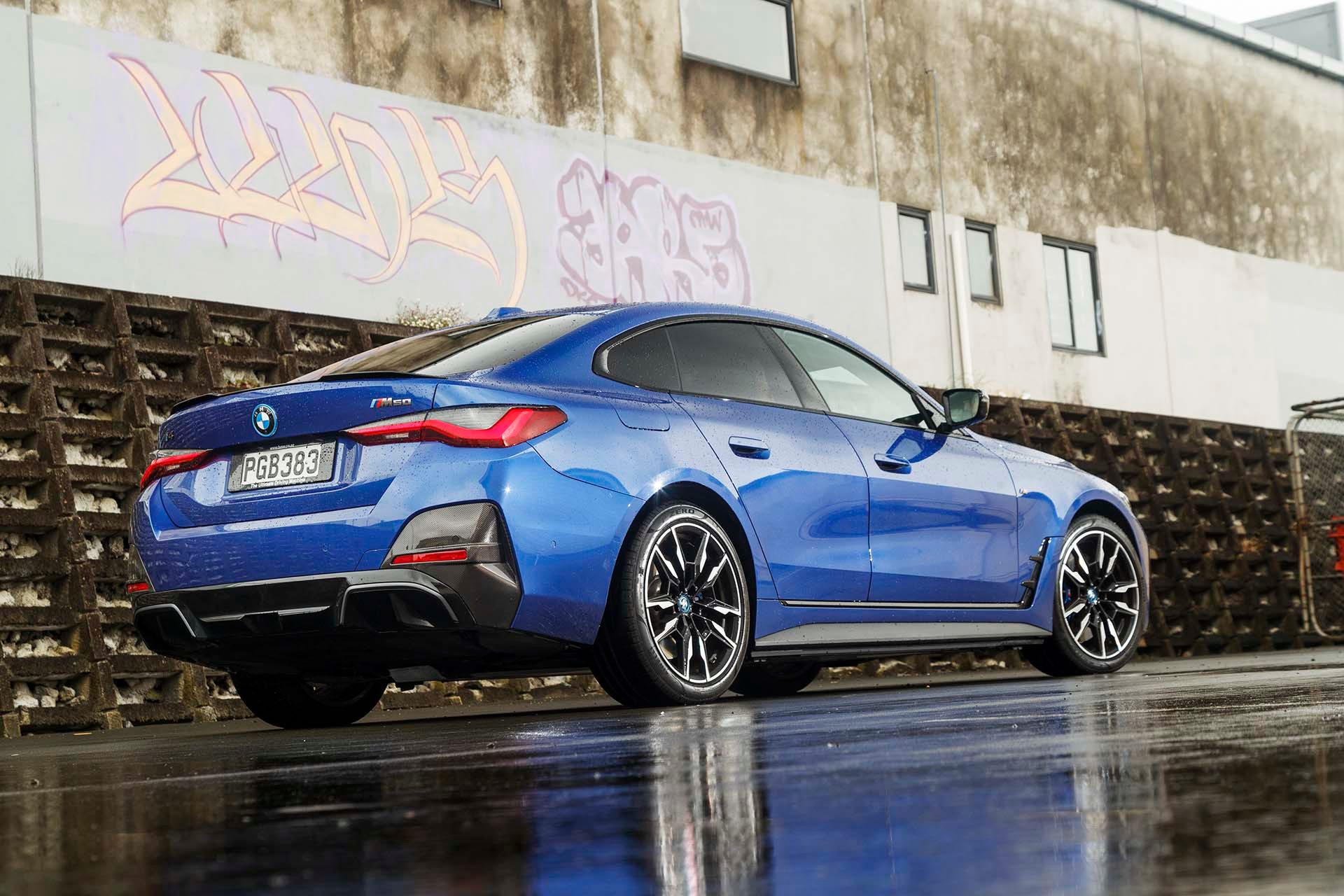2022 BMW i4 M50 xDrive review
You’re looking here at the first electric M car from BMW, the i4 M50 Gran Coupe with xDrive. Is it worthy?

You’re looking here at the first electric M car from BMW, the i4 M50 Gran Coupe with xDrive. Is it worthy?
After a brief interlude where BMW set electrification on pause, the company is once again full steam ahead on high voltage vehicles with batteries. And if the idea of a zero-emissions M car seemed preposterous five years ago, it isn’t now. The German’s first electric M car is here, an electric four-door Gran Coupe style that can give the M5 a run for its money, all without costing as much. It’s actually closer in size and money to the M3 xDrive, but that we haven’t driven, the M5 we have. It even sounds pretty interesting thanks to the input of a muso, would you believe?
If we were forced to choose between the pair for the ride and handling balance, the BMW i4 gets the nod. The M5 has sharper handling being lighter, and you can feel the extra weight of the i4 in corners. However, the M50 is impressive thanks to its flexible chassis architecture, a slimline (110mm tall) 84kWh battery pack set low down, wide tracks, M Sport suspension, a 50/50 weight split and rearward drive bias. Moreover, it can shift torque forward or aft in the blink of an eye. You’d not believe how early you can get back on the pedal out of corners in this machine. All with a minimum of fuss, thanks to BMW’s fast-acting wheel-slip limitation system that works in concert with xDrive AWD.
Special standard features not already mentioned include a host of driver assistance technology (lane keeping, self parking, traffic sign recognition etc), head-up display, standard-fit Laserlights, three-zone climate air, and a 14-inch touchscreen and 12-inch digital instruments all under curved glass. There’s also acoustic glazing, comfort access (self unlocking), seat heating up front, electric sunroof, Qi charger and HK 16-speaker surround sounds. BMW Connected Drive includes smartphone integration, realtime traffic information, remote software updates and various apps. Our particular drive car came with $13.5k of cost options, including alarm, sunglazing, and TPM amongst others, taking the total to just over $150k.
In essence, the M50 delivers M5 performance, or near enough to, without the tailpipe emissions, and a better ride and handling balance. It has almost as much interior space (both are essentially four seaters) and enhanced luggage practicality due to the nature of its liftback design. Yes, there’s slightly reduced range but you pay less when refueling, with the convenience of doing it at home.
If performance isn’t so important to you, the i4 is also available in a single motor, rear drive i4 eDrive40 variant with the same battery pack, range of up to 590km and pricing that kicks off from $109,900.
| Model | BMW i4 M50 |
| Price | $137,900 |
| Clean Car Discount | Neutral – $0 |
| Motor | dual, 400kW/795Nm |
| Battery | 84kWh |
| Range | 435km (WLTP) |
| Drivetrain | single-speed auto, AWD |
| Energy Use | 21.5kWh/100km |
| C02 Output | 0g/km |
| 0-100km/h | 3.59sec |
| 80-120km/h | 2.11sec (60.34m) |
| 100-0km/h | 32.30m |
| Stability systems | ABS, ESP |
| Safety | AEB, ACC, BSM, LDW, RCTA, ALK, AHB |
| Luggage capacity | 420-1290L |
| Tow rating | 750kg (1600kg braked) |
| Service intervals | 24 months, 20,000km |
| Warranty | 5yrs, 100,000km |
| ANCAP rating | not yet rated |
| Weight | 2290kg (claimed) |
This article was originally published on autocar.co.nz
Also consider
